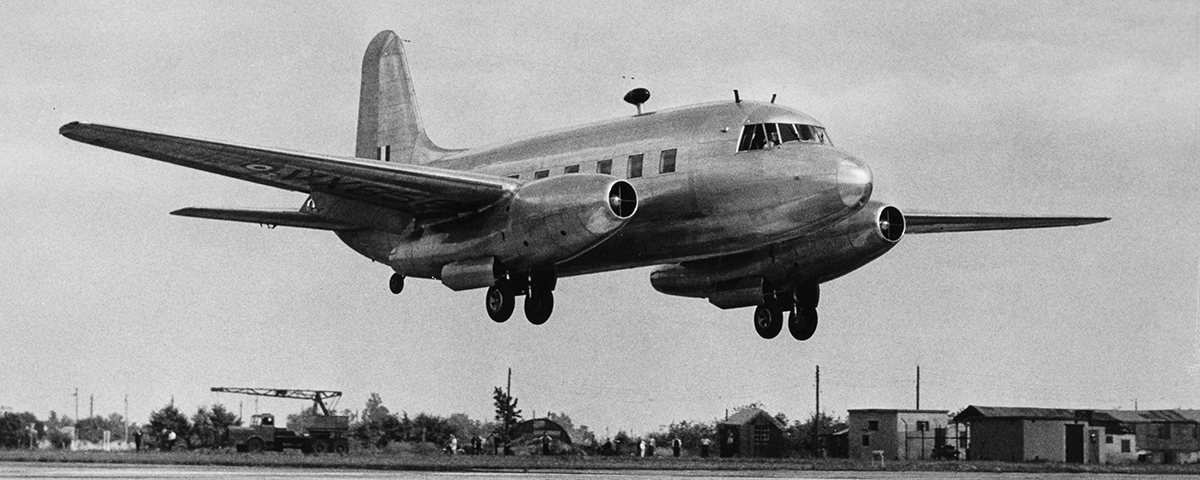Vickers 618 Nene Viking
In 1944, with the prospect of Allied victory and the end of World War II in sight, the British Ministry of Aircraft Production issued specification 17/44 for three prototypes of a short- to medium-range civilian transport. The new airliner would use the Vickers Wellington bomber’s wings, with a completely new, streamlined fuselage. Vickers-Armstrongs Ltd. got right on it, and the first prototype of the Vickers Type 491 Viking made its maiden flight on June 22, 1945, entering service in 1946. Powered by Bristol Hercules radial engines, the 163 Vikings built were progressively enlarged and also developed into the Valetta military transport and Varsity military trainer. Additionally, one Viking airframe was fitted with a pair of Rolls-Royce Nene I turbojet engines, each producing 5,000 pounds of thrust. On April 6, 1948, the Vickers Type 618 Nene Viking became the first air transport to fly powered exclusively by jet engines. Although never intended as anything more than an experimental testbed toward more purpose-built jet airliners, the Nene Viking had a moment of glory on July 25, when it flew from London’s Heathrow Airport to Villacoublay outside Paris in a reversed salute to Louis Blériot on the 39th anniversary of his pioneering airplane flight across the English Channel. The Nene Viking covered the 222-mile distance in 34 minutes, averaging 394 mph (415 mph maximum). It delivered letters to Blériot’s widow and son, and returned to Heathrow that same afternoon. In 1954 the Ministry of Supply had the jet converted back to 1,690-hp Hercules 694 engines and sold it to Eagle Aviation.

